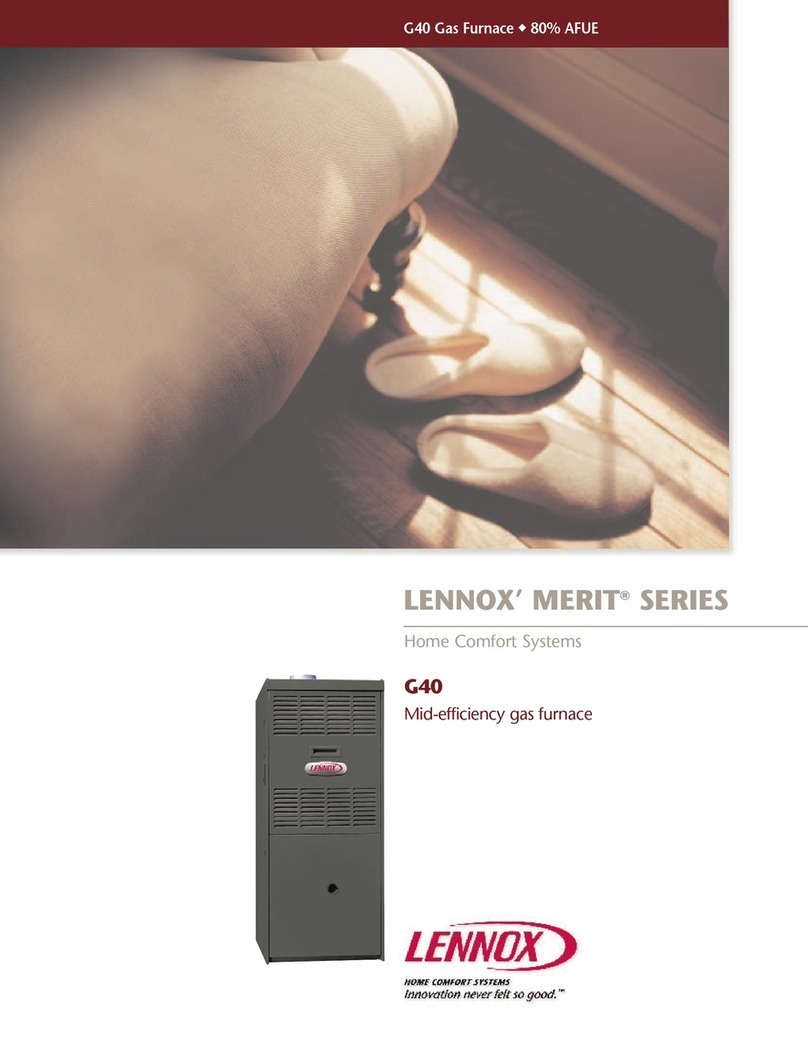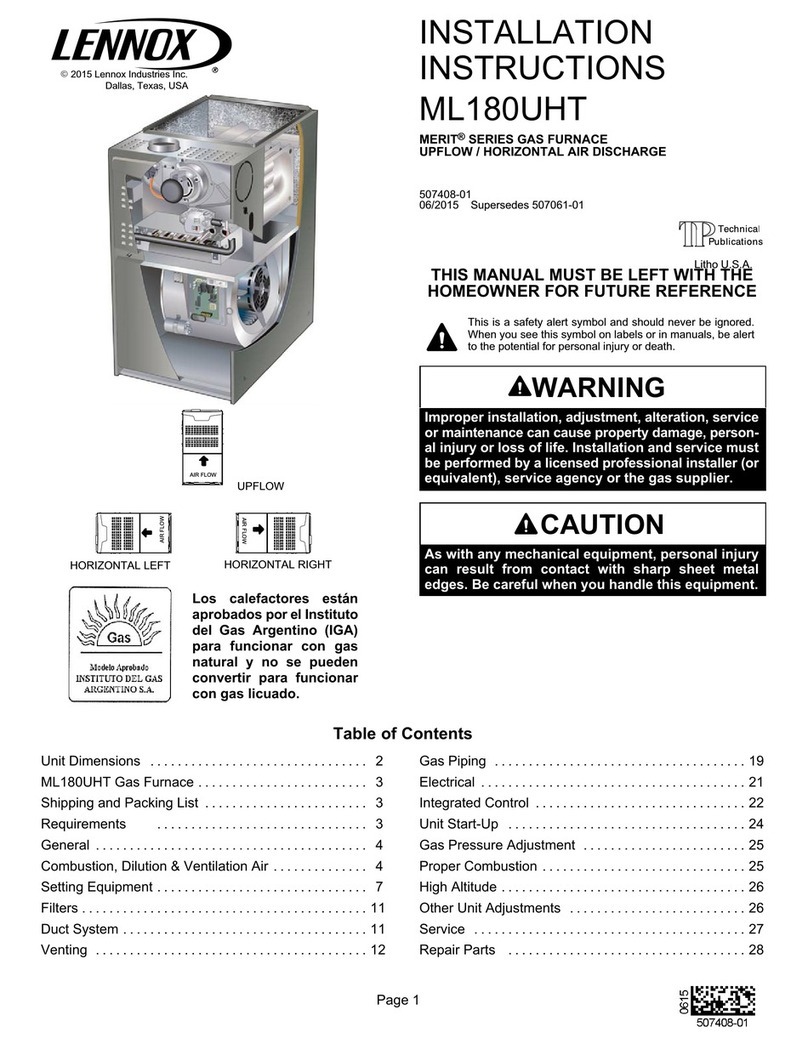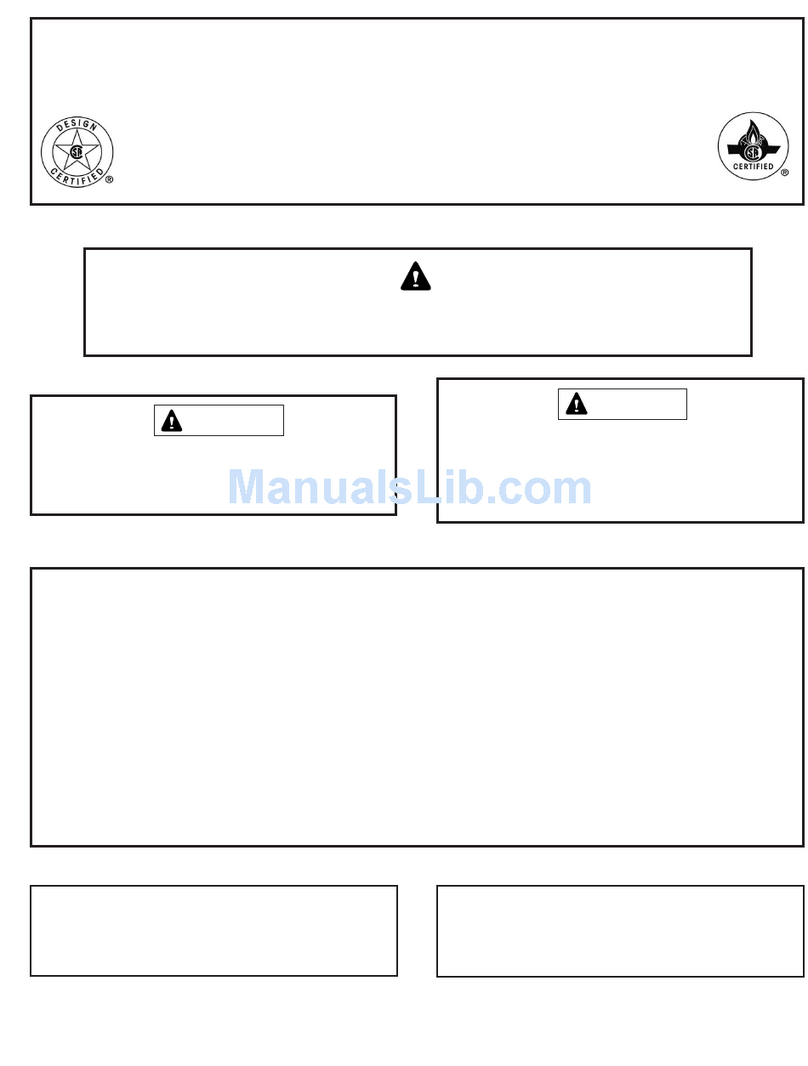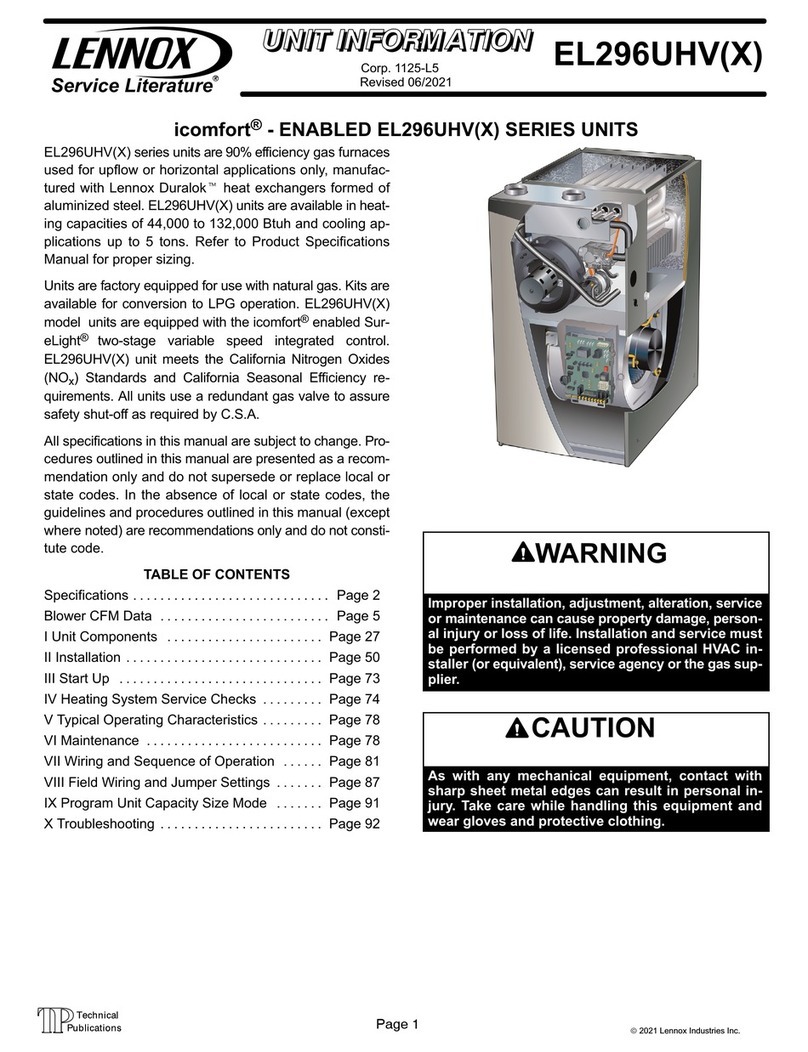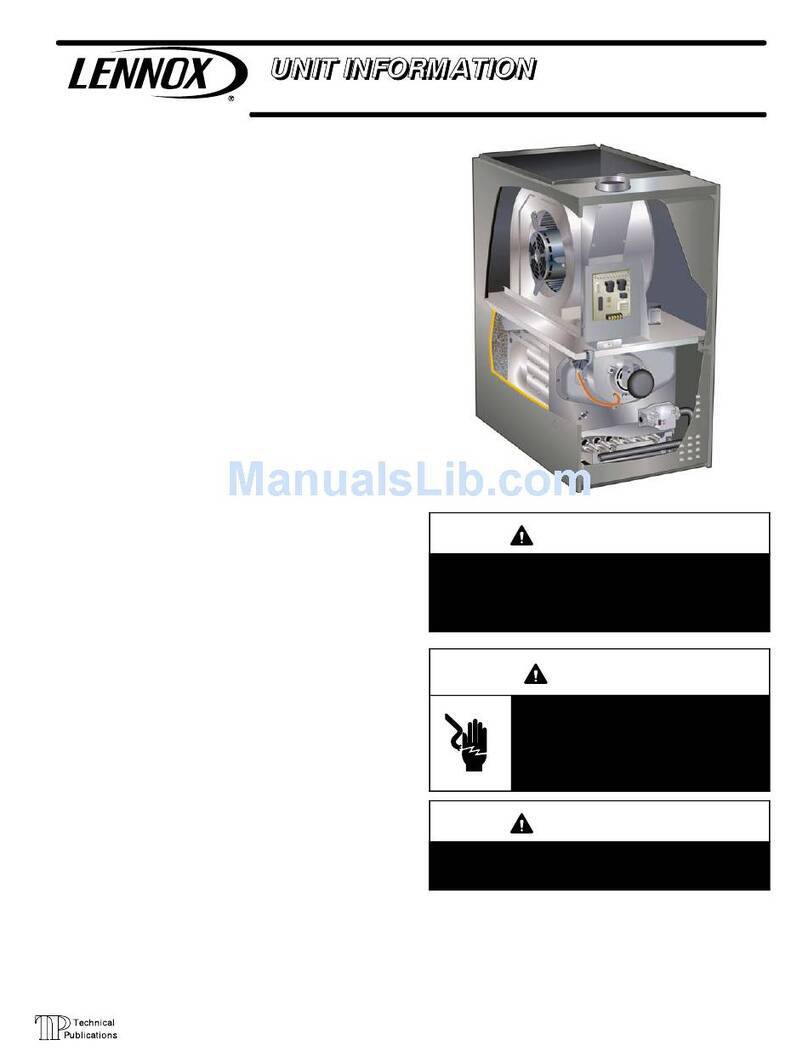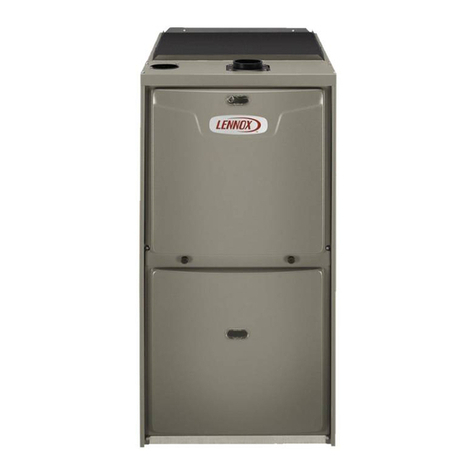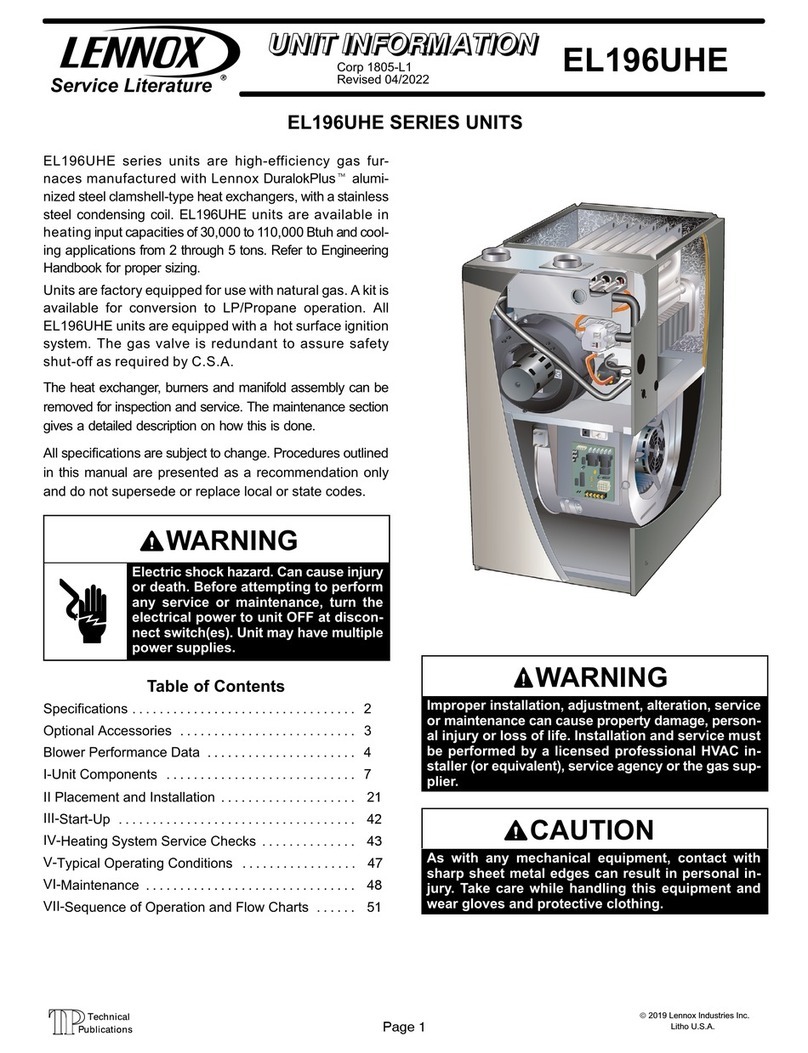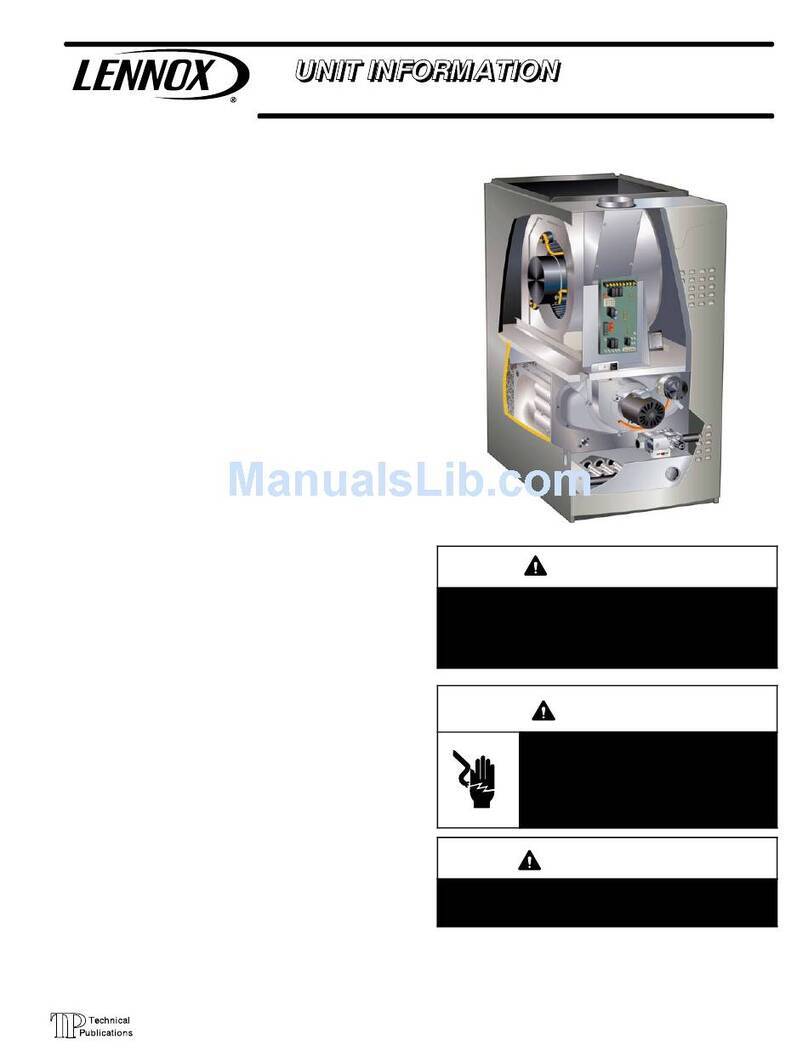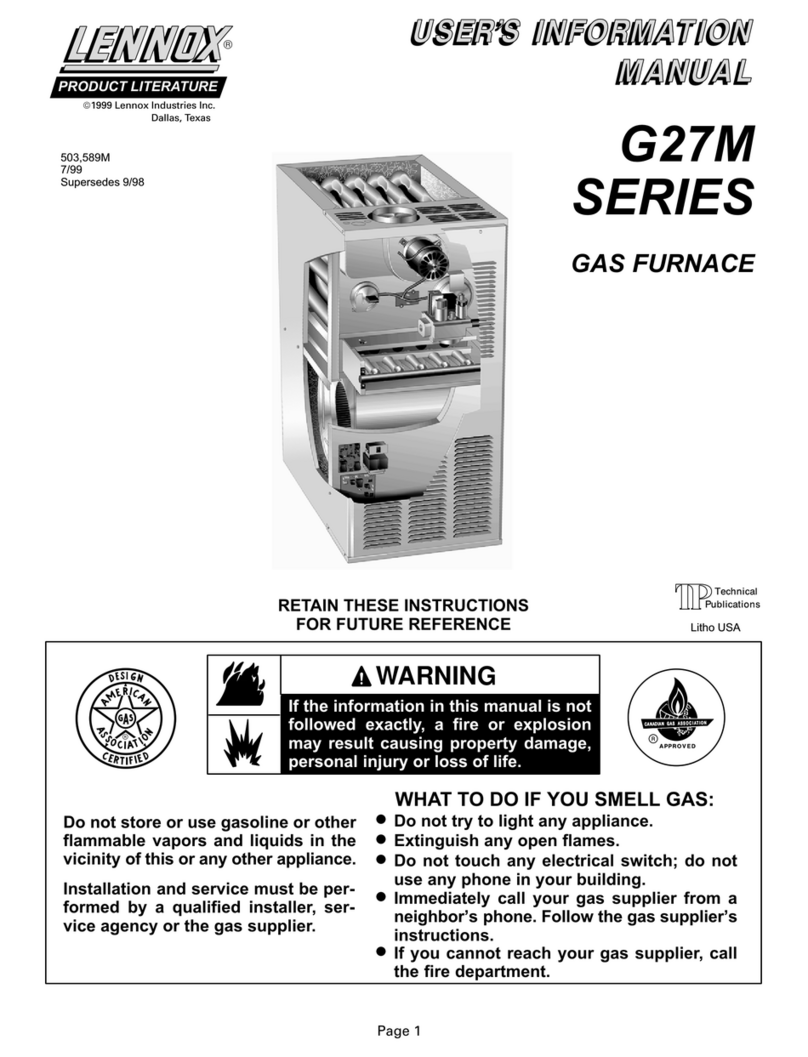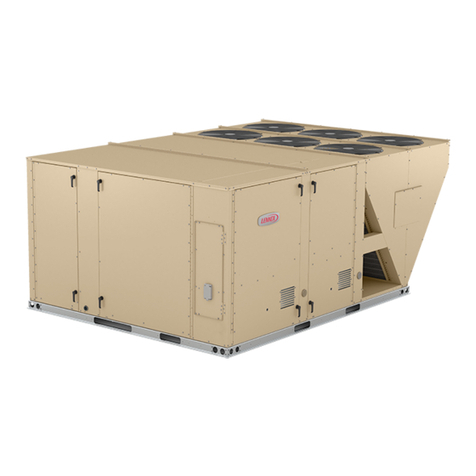
FIGURE 9
TYPICAL BURNER ASSEMBLY
Page 10
Electrical blower control components (A15), unit transformĆ
er (T1) and 24V circuit breaker (CB8) are located in the conĆ
trol box. In addition, a door interlock switch ( 51) is located
in the control box. Jackplugs and a snapĆoff" terminal strip
allow the control box to be easily removed for blower serĆ
vice.
1- Control Transformer (T1)
A transformer located in the control box provides power to
the low voltage 24volt section of the unit. Transformers on
all models are rated 40VA with a 120V primary and a 24V
secondary.
2- Cir uit Breaker (CB8)
A 24V circuit breaker is also located in the control box. The
switch provides overcurrent protection to the transformer
(T1). The breaker is rated 3A at 32V. If the current exceeds
this limit the breaker will trip and all unit operation will shutĆ
down. The breaker can be manually reset by pressing the
button on the face.
3-Door Interlo k Swit h (S51)
A door interlock switch rated 14A at 125VAC is located on
the control box. The switch is wired in series with line voltĆ
age. When the blower door is removed the unit will shut
down.
4-Flame Sensor (-3 through -6 models)
A flame sensor is located on the left side of the burner supĆ
port. ee figure 8. The sensor is mounted on a bracket in
the burner support and the tip protrudes into the flame enĆ
velope of the left-most burner. The sensor is fastened to
burner supports and can be removed for service without
removing any part of the burners. During operation, flame
is sensed by current passed through the flame and sensĆ
ing electrode. The ureLight control allows the gas valve
to remain open as long as flame signal is sensed.
FIGURE 8
SENSOR IGNITOR
NORMAL FLAME SIGNAL u 0.7 MICROAMPS
LOW FLAME SIGNAL v 0.7 MICROAMPS
MINIMUM FLAME SIGNAL v 0.15 MICROAMPS
3/8"
5/16"
NOTE - The G2 furnace contains electronic compoĆ
nents that are polarity sensitive. Make sure that the
furnace is wired correctly and is properly grounded.
5-Burners
All units use inshot burners (see figure 9). Burners are factory
set and do not require adjustment. A sight glass is furĆ
nished in the burner box assembly for flame viewing. AlĆ
ways operate the unit with the burner box cover in place.
Burners can be removed as an assembly for service. Burner
maintenance and service is detailed in the MAINTENANCE
section of this manual. Each burner uses an orifice which is
precisely matched to the burner input (see nameplate for
orifice size). The orifice is threaded into the burner manĆ
ifold. The burner is supported by the orifice and will easily
slide off for service. Each orifice and burner are sized speĆ
cifically to the unit. Refer to Lennox Repair Parts Listing for
correct sizing information. A flame retention ring in the end of
each burner maintains correct flame length and shape and
keeps the flame from lifting off the burner head. In addition,
the burner entrance to each clamshell (Figure 2) is fitted with
a corbel cup (orifice)
used to direct the
flow of combustion
products.
DANGER
Sho k hazard.
Dis onne t power before servi ing. Control is not
field repairable. If ontrol is inoperable, simply
repla e entire ontrol.
Can ause injury or death. Unsafe operation will
result if repair is attempted.
6- SureLight Ignition System A3
(-3 through -6 models)
All G26-3 through -6 model units are equipped with the
Lennox ure - Light ignition system. The system consists
of ignition control board (figure 10 with control terminal
designations in table 1) and ignitor (figures 8 and 11). The
board and ignitor work in combination to ensure furnace
ignition and ignitor durability. The ureLight integrated
board controls all major furnace operations. The board
also features two LED lights for troubleshooting and two
accessory terminals rated at (4) four amps. ee table 2
for troubleshooting diagnostic codes. Table 3 and 4 show
jack plug terminal designations. Units equipped with the
ureLight board can be used with either electronic or
electro-mechanical thermostats without modification.
The ureLight ignitor is made of durable silicon-nitride.
Ignitor longevity is also enhanced by voltage ramping by
the control board. The board finds the lowest ignitor temĆ
perature which will successfully light the burner, thus inĆ
creasing the life of the ignitor.
NOTE - Do not remove blower access panel to read
SureLight LED lights. A sight glass is provided on the
access panel for viewing.



